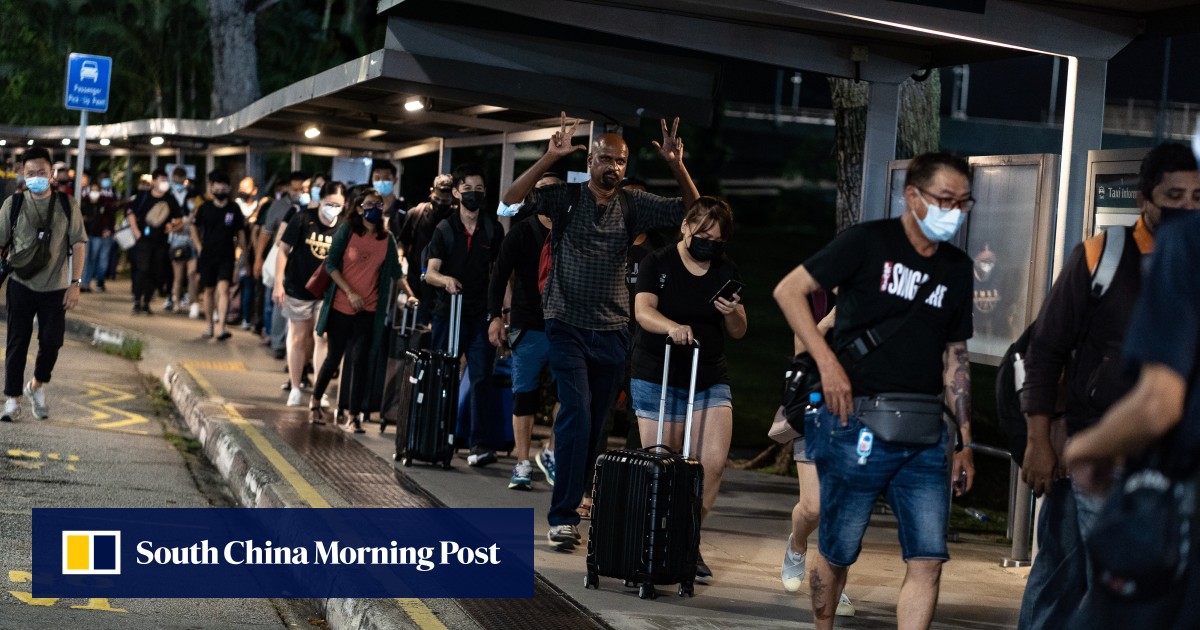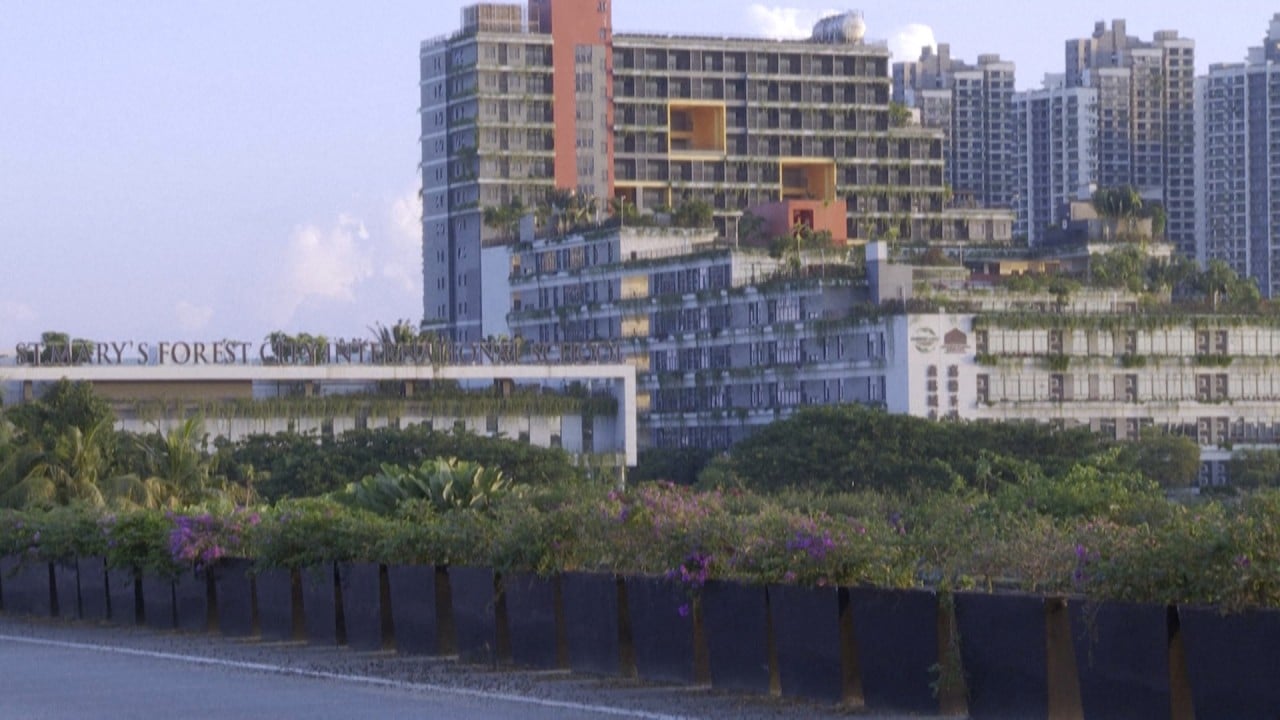The capital of the Malaysian state of Johor, the city has seen a boom in construction that includes high-rise condominiums within walking distance to the border checkpoint as well as a new rail station that connects directly to Singapore’s expansive mass rapid transit line.
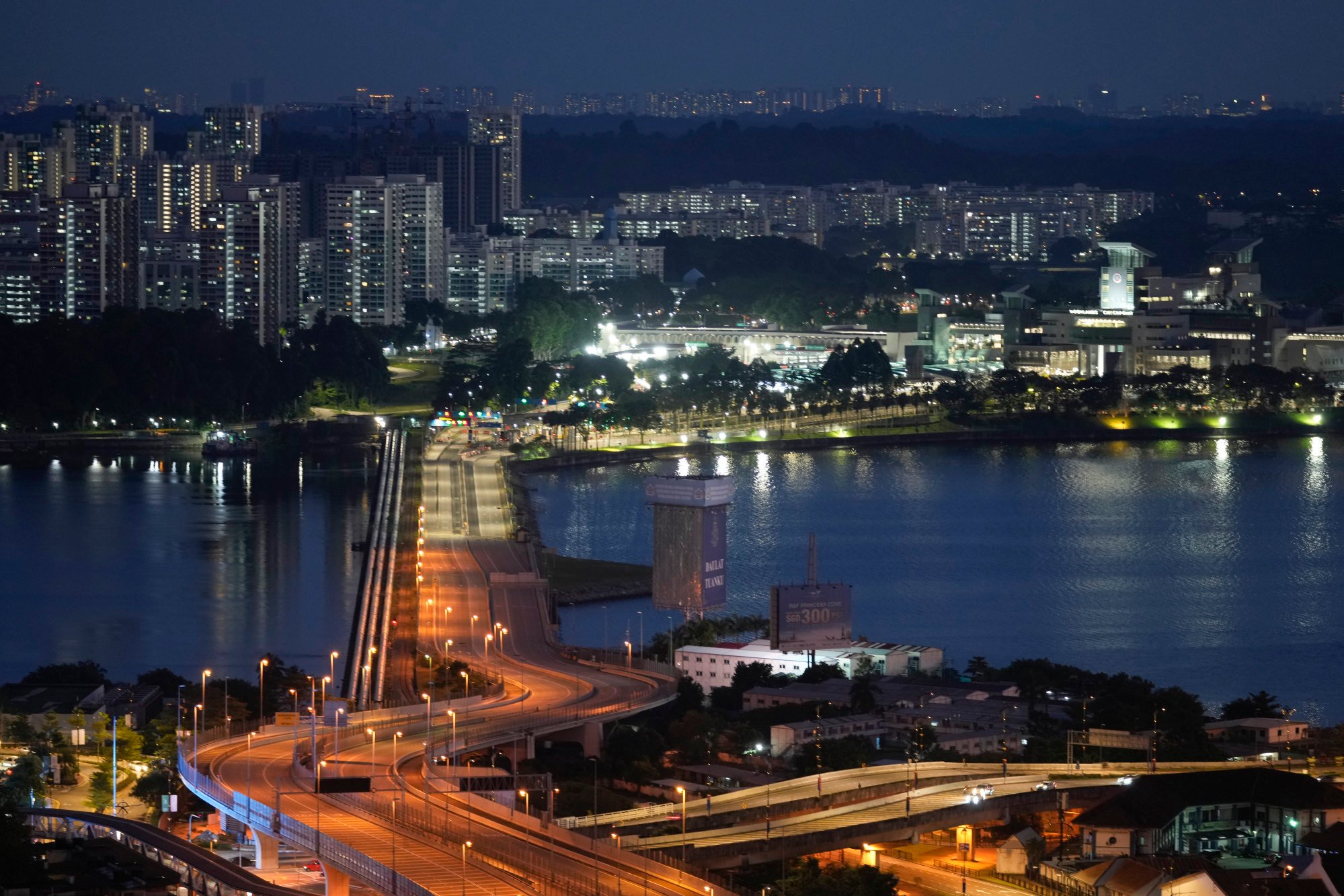
Calling himself “half from Singapore, half from JB” – as the Malaysian city is colloquially called – Gregory Low said there had been a surge in fellow Singaporeans opting to relocate to Malaysia, spurred by the city state’s skyrocketing rental prices.
“There is a spike in Singaporeans investing and moving to JB because of the rental spike in Singapore,” Low, a property agent, told This Week in Asia.
Since moving to JB in 2012, he said rent in Singapore had more than doubled from when he was still living in his hometown. Singapore’s Urban Redevelopment Authority meanwhile reported in 2023 that rent of private residential properties increased by 29.7 per cent between 2021 and 2022 alone.
This has been compounded by the recent rise in Singapore’s Goods and Services Tax from 7 per cent to 9 per cent at the start of the year, and the increasing cost of electricity, the highest since late 2022.
Can Singapore hawkers keep afloat amid ‘pain’ of rising food, rent costs?
Can Singapore hawkers keep afloat amid ‘pain’ of rising food, rent costs?
Malaysian banker Sharmila Devi found this out the hard way after accepting a much-anticipated job offer in Singapore. Used to the privacy of living alone in a cosy Kuala Lumpur apartment, she now had to share a room with strangers, as a small room with an attached bathroom goes for US$2,000.
“I have had to reconsider my needs and wants,” she told This Week in Asia. “Do I want to spend 20 per cent of my salary and share a unit with five to six strangers, or do I want my own space at the cost of half my salary?”
Saying that the last time she lived in shared accommodation was 15 years ago while studying, Sharmila’s rent, which converts to more than 7,000 ringgit (US$1,480), could get her a 2,000 sq ft condominium around the landmark Petronas Twin Towers in Kuala Lumpur.
“It’s bizarre when you think of it in that sense,” she argued.
Changing work cultures and the flexibility of remote working that came about after the pandemic are making it increasingly easier for people to make the switch from Singapore to JB.
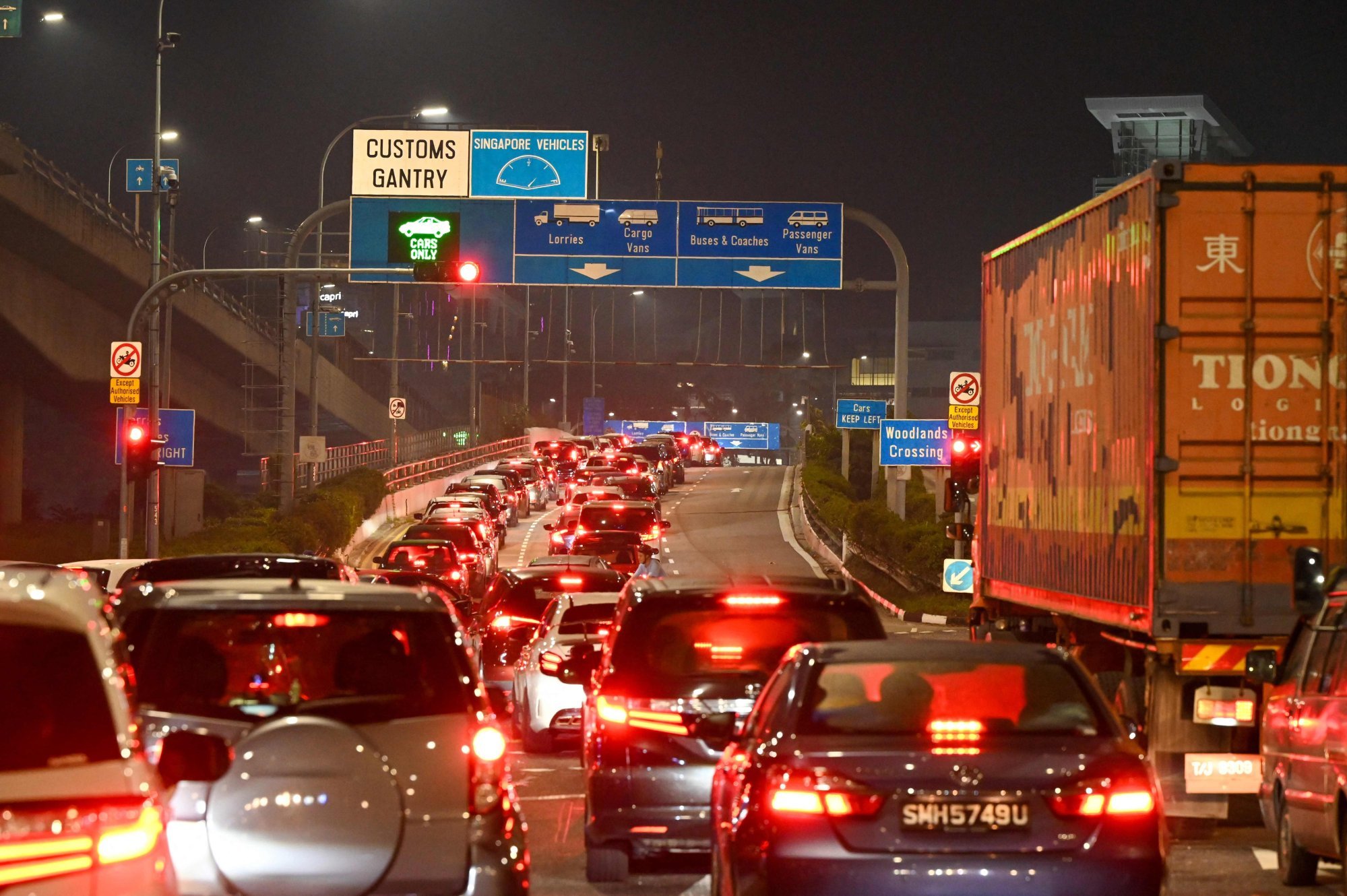
Singaporean Harjinder Singh, a logistics manager in Tuas, Singapore, said his current work arrangement only required him to be at the office once a week, on Monday for meetings, allowing him to spend most of his time in the new township of Horizon Hills, just outside Johor Bahru where he is renting a landed terrace house.
“I’ve always wanted a landed property for my dogs to run around,” Harjinder told This Week in Asia.
The township is conveniently located between the causeway and its counterpart the Second Link Bridge, the only other land connection between the two countries.
“Tuas is just across, and the bridge is less congested than the Causeway. If work needs me I can be in Singapore in under an hour,” he said.
This is bolstered by the strength of the Singapore dollar and the depreciating Malaysian ringgit, which have widened the gap between the two currencies with the dollar now more than 3.5 times more valuable than the ringgit.
With a strong currency and comparatively affordable options, property agent Low said Singaporeans had not gone crazy about the size of the property they buy in JB, and instead were looking for just a small upgrade from their 1,000 sq ft public housing flats in Singapore.
“Many prefer linked houses or apartments that are around 1,400 sq ft,” he said.
What’s more important is connectivity.
‘Unprecedented’: Malaysia, Singapore to push ahead with special economic zone
‘Unprecedented’: Malaysia, Singapore to push ahead with special economic zone
One such property is Guangzhou-based R&F Group’s Princess Cove complex, a sprawling mix of apartment and commercial developments complete with an opera house that is “selling like hot cakes” to Singaporean buyers according to property agents, lured by its claim of being “only 1,056 metres away from Singapore”.
Overlooking the causeway, the property is also being sought after as it will eventually connect to the much-awaited Johor Bahru-Singapore Rapid Transit System Link (RTS Link) that is scheduled to start operating by the end of 2026.
Situated just east of the clogged Causeway, the 4km RTS Link can handle over 10,000 people per hour during rush hour utilising a single border check for both countries and the use of QR codes instead of passports for faster movement.
Its introduction is much anticipated on both sides of the border as over 350,000 people rely on the 100-year-old causeway daily to cross in and out, making it one of the busiest land border crossings anywhere in the world.
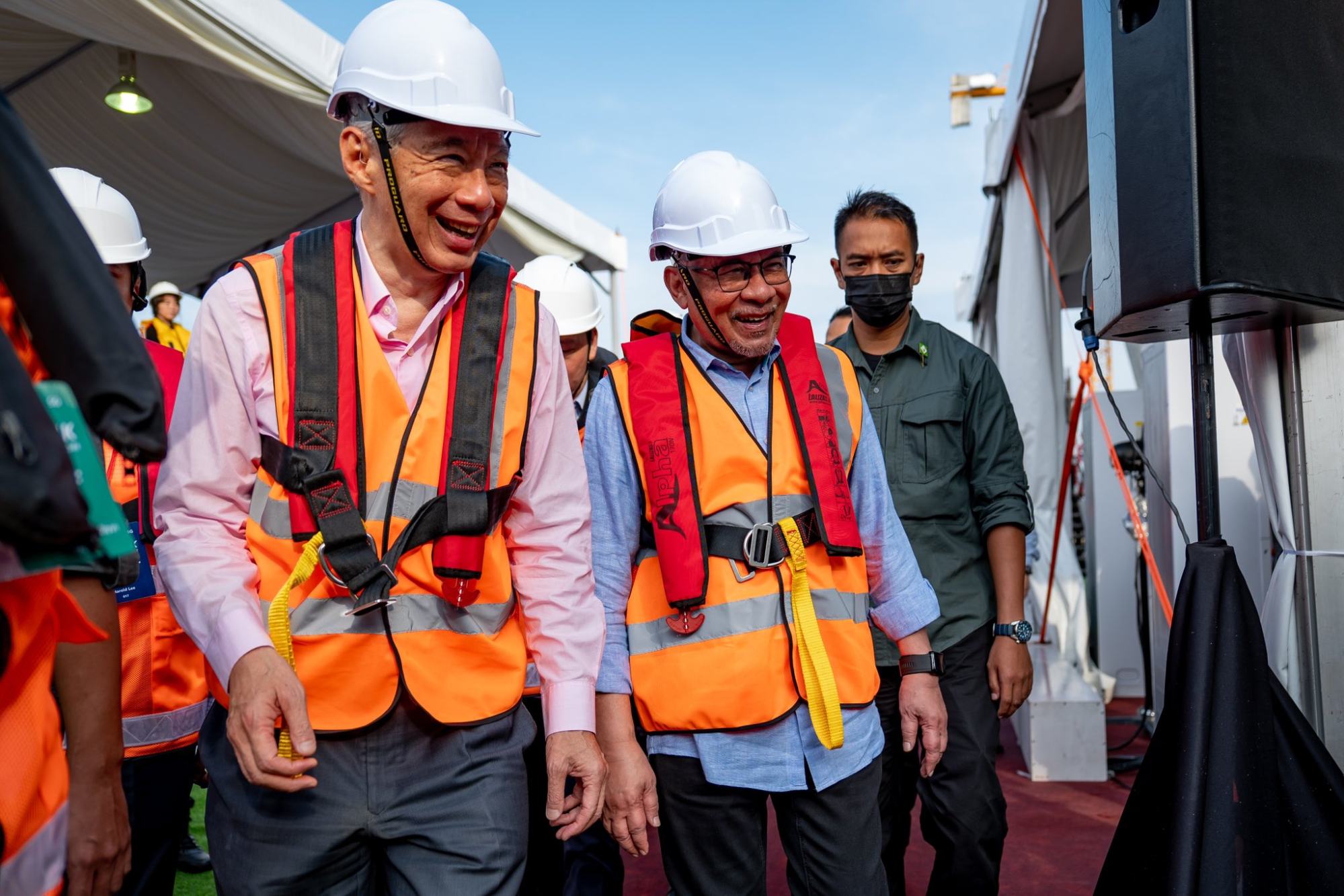
Singapore came together with Malaya, North Borneo and Sarawak to form Malaysia in 1963. It however left in 1965 due to disagreements with the federal government in Kuala Lumpur.
The two leaders also witnessed the signing of the Johor-Singapore Special Economic Zone (JS-SEZ), which would see the establishment of a one-stop business/investment centre in Johor to help Singapore businesses establish operations across the causeway, the two-way passport-free QR code immigration clearance, and bilateral cooperation on renewable energy projects in the special economic zone.
“One day, I pray the international community will talk about this JS-SEZ like they talked about Shenzhen-Hong Kong before,” Malaysia’s Economics Minister Rafizi Ramli said about Malaysia’s vision for the region.
Singapore was Johor’s second-largest foreign investor in the first half of 2022, accounting for around 70 per cent of its total foreign direct investment in manufacturing.
The two neighbouring countries are also each other’s second-largest trading partners, with S$153 billion (US$115 billion) in bilateral trade that same year.
This line-up of leaders, together with Sultan Ibrahim Ismail, the reigning monarch of the state of Johor who is poised to take the throne as Malaysia’s next king next month, is seen as the perfect cohort to bring meaningful attention to this region which experienced false starts under previous leaderships.
Is it too costly, too late for Malaysia-Singapore high-speed rail link?
Is it too costly, too late for Malaysia-Singapore high-speed rail link?
Launched to much fanfare in 2006, Malaysia branded an area of 2,217 sq km – three times the size of Singapore – as Iskandar Malaysia, a development corridor that sought to capitalise on Malaysia’s abundant land and proximity to Singapore.
With the RTS Link back on track and schedule, Prime Minister Anwar’s administration is looking into reviving the high-speed rail project which would bring Kuala Lumpur, let alone Johor Bahru, closer to Singapore.
While there is a lot of excitement on the southern tip of the Malaysian peninsula over these developments, locals in Johor Bahru are grumbling over the unceasing construction happening around them that robbed their city of its charm.
“Lido Beach, Danga Bay, those were our stomping grounds, now gone,” said Farouk Rahmat of Bandar Baru Uda, a neighbourhood in Johor Bahru.
Coastal development, mostly by Chinese corporations, has led to the reclamation of the shoreline for the construction of high-rise mixed development akin to the R&F Princess Cove, changing the landscape of the once quiet city.
“That’s why I like the pandemic lockdown,” he said. “Two years, no Singaporeans.”
Nurul Huda Md Zain, a recent college graduate, meanwhile laments her future in the city, saying that it is being priced out of reach of locals and is instead catering to Singaporeans.
“It feels like everything here is just to serve them, and not us,” Nurul said.
Asked if she is looking to work in Singapore, she says it is most likely going to be her only option, other than moving further north to Kuala Lumpur as jobs in Johor Bahru itself do not pay much.
Malaysia lures Singapore’s expats as Chinese-built Forest City homes ‘sit empty’
Malaysia lures Singapore’s expats as Chinese-built Forest City homes ‘sit empty’
Acknowledging the government’s plan for Johor Bahru and the state in general, many Malaysians remain sceptical about how it would benefit them, stemming from previous experiences of massive developments around them that serve to cater to others.
One such project is Forest City by another Chinese developer Country Garden, which has been touted as a failure and a “ghost city”, marketed for Chinese investors who were similarly lured by the mystique of its proximity to Singapore.
A recent visit by This Week in Asia in December found the place overgrown with vegetation, closed businesses and very few inhabitants in its many apartment towers.
“We will believe it when we see it,” said Rozita Buang, owner of a small sundry shop in a village near Forest City.
Property agent Gregory Low, however, is bullish.
“When I moved here in 2012, there were only three cafes in JB. Now there are more than a hundred,” he said, stressing that the quality of life between the two cities is becoming similar. “The Shenzhen-Hong Kong dream may come true.”

